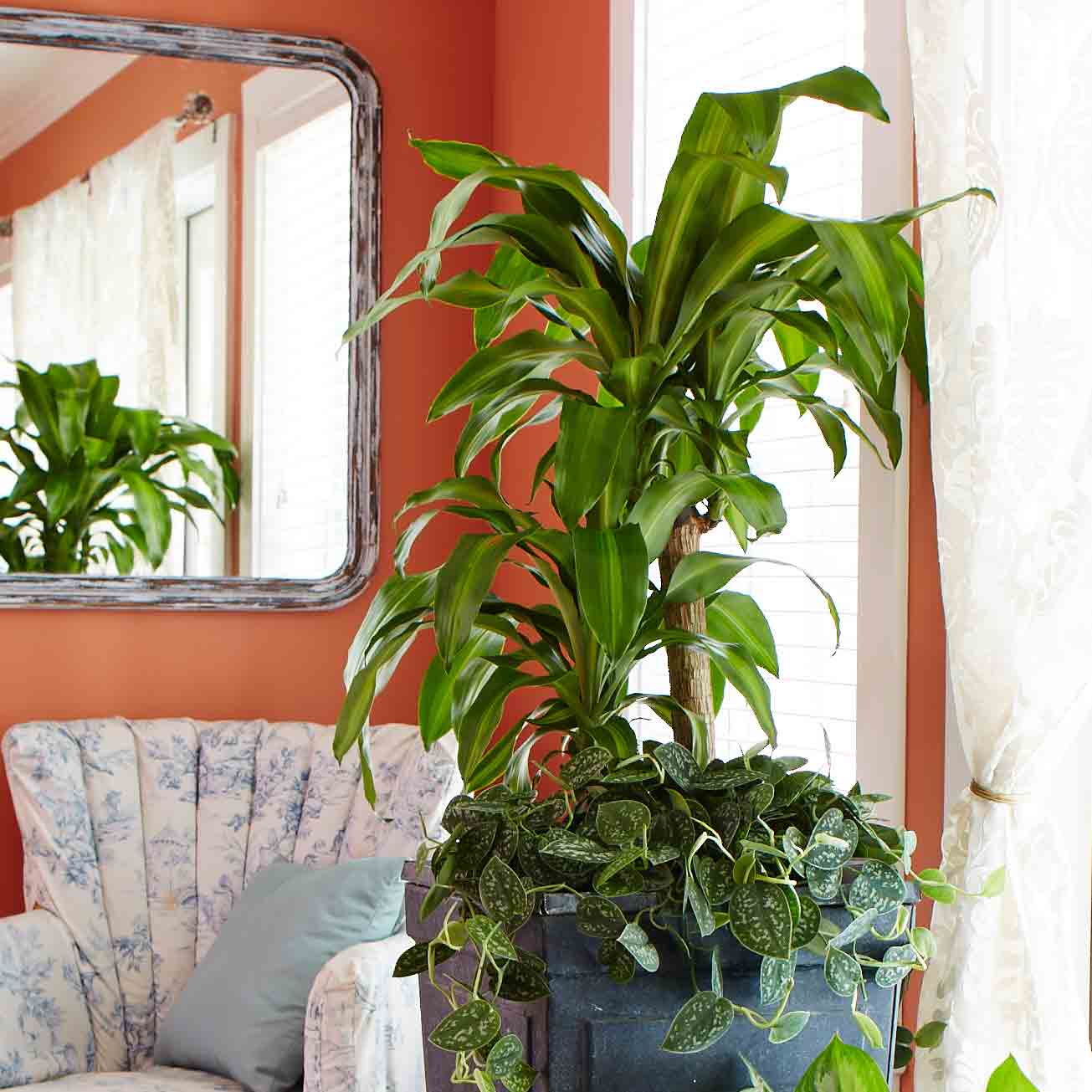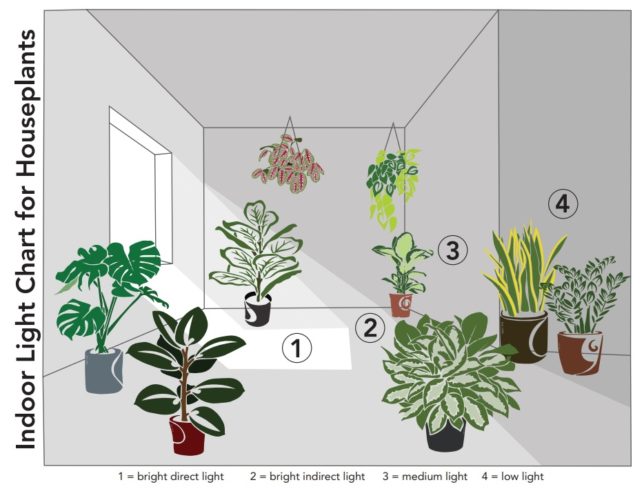Best Low-Light Indoor Plants That Thrive with Minimal Sunlight
Transform Your Home With Beautiful Low-Light Indoor Plants and Their Benefits
Integrating low-light interior plants into your home can dramatically improve both the visual and environmental high quality of your space. These plants, which prosper in dim conditions, serve not just as decorative aspects yet also as natural air purifiers, making them optimal for city dwellers or those with restricted sunshine exposure. As we explore the numerous sorts of low-light plants and their benefits, you might locate surprising methods to incorporate them into your home that can transform your surroundings in methods you could not have actually prepared for.
Benefits of Low-Light Plants
Low-light plants use countless advantages for indoor environments, making them a superb selection for both newbie and skilled gardeners. One of the primary advantages is their flexibility to low-light problems, allowing individuals to enhance their living spaces without the demand for comprehensive sunlight exposure. This characteristic makes them suitable for homes, offices, and various other locations with restricted all-natural light.

Furthermore, including low-light plants right into home decor can elevate the aesthetic charm of an area. Their lush vegetation and differed textures create a calming ambience, contributing to total well-being. The existence of greenery has actually been connected to minimized stress and anxiety degrees and improved productivity, making low-light plants a practical selection for boosting both mental and physical wellness in indoor settings.
Leading Low-Light Indoor Plants
While many interior plants prosper in brilliant light, numerous types are specifically appropriate for low-light conditions, making them excellent for different interior areas. One preferred choice is the Serpent Plant (Sansevieria), understood for its striking upright leaves and durability, requiring very little treatment. One more superb choice is the Pothos (Epipremnum aureum), which features heart-shaped leaves and can route magnificently from racks or hangers, prospering in reduced light and adding a rich touch.
The ZZ Plant (Zamioculcas zamiifolia) is commemorated for its glossy fallen leaves and ability to hold up against overlook, making it excellent for hectic way of livings. The Tranquility Lily (Spathiphyllum) not just tolerates low light however additionally generates spectacular white blooms, enhancing any space's visual.
For an unique touch, take into consideration the Cast Iron Plant (Aspidistra elatior), which certainly measures up to its name, growing in the darkest edges of your home. Lastly, the Chinese Evergreen (Aglaonema) offers a variety of leaf patterns and shades while being incredibly flexible in low-light problems. These plants not only enhance indoor environments but also contribute to air purification, improving your space.
Care Tips for Low-Light Plants
:max_bytes(150000):strip_icc()/eight-houseplants-that-thrive-in-low-light-3-0922-2000-6f95610b936648ce84ebb498a9b6d704.jpg)
Watering practices are visite site critical; these plants frequently like somewhat completely dry problems. Overwatering can cause root rot, so ensure that the top inch of soil is dry prior to sprinkling again. Use pots with drain openings to permit excess dampness to escape.
Humidity is one more crucial variable. Many low-light plants, such as ferns and peace lilies, gain from higher humidity levels. To boost moisture, take into consideration misting the leaves or placing a tray of water near the plants.
Fertilization should be over here approached with caution. During the growing season, use a weakened, balanced liquid fertilizer each month to support growth, however prevent fertilizing throughout the dormant cold weather.

Creative Ways to Display Plants
Interior plants can function as fascinating focal factors in any room, improving both visual allure and ambiance. Innovative screens can boost the visual impact of low-light plants, making them an important component of your home decor. One efficient approach is to use tiered plant stands, which allow you to showcase several plants at differing elevations while taking full advantage of flooring room.
Hanging planters are another ingenious choice, producing a sense of deepness and attracting the eye up. Take into consideration macramé wall mounts or wall-mounted shelves to introduce an one-of-a-kind appearance and design.
For a more organized approach, use geometric terrariums or glass containers to house your plants, including a modern-day touch to your interior yard. You can additionally repurpose classic products, such as teacups or wood dog crates, for a diverse screen that mirrors your personality.
Enhancing Home Atmosphere With Plants
Incorporating low-light plants right into your home not only boosts visual appeal yet also contributes substantially to the overall atmosphere. These plants act as all-natural style aspects, presenting a sense of serenity that can change any space. The visibility of greenery cultivates a calming atmosphere, which is especially beneficial in high-stress settings such as home workplaces or living areas.
Low-light plants, such as snake plants, pothos, and ZZ plants, are not only aesthetically pleasing yet likewise enhance indoor air top quality by filtering pollutants. This twin feature improves the ambiance better, developing a healthier living click to read more space (Best low-light indoor plants). The strategic positioning of these plants can likewise influence the assumption of area; for example, high plants can draw the eye upwards, making ceilings appear greater and rooms extra sizable
Additionally, varying appearances and colors of vegetation add deepness to interior layout, enabling creative expression in home designing. Whether placed on racks, in corners, or as focal points, low-light plants can elevate the state of mind of any area. In summary, integrating these plants into your home is an efficient way to promote a cozy, inviting ambience while profiting of improved air high quality and visual versatility.
Conclusion
Including low-light interior plants right into home environments offers various benefits, including improved visual charm and boosted air quality. These resistant plants, such as the Snake Plant and Peace Lily, require minimal light and maintenance, making them suitable for diverse way of livings.
While many indoor plants thrive in bright light, several species are particularly well-suited for low-light problems, making them perfect for numerous interior rooms. One efficient technique is to utilize tiered plant stands, which enable you to showcase multiple plants at differing heights while making best use of flooring room.
Low-light plants, such as snake plants, pothos, and ZZ plants, are not only aesthetically pleasing but also boost interior air top quality by filtering system contaminants. Best low-light indoor plants. The calculated placement of these plants can also affect the understanding of area; for instance, high plants can attract the eye upwards, making ceilings show up higher and areas extra large
These durable plants, such as the Serpent Plant and Tranquility Lily, need very little light and maintenance, making them suitable for varied way of lives.